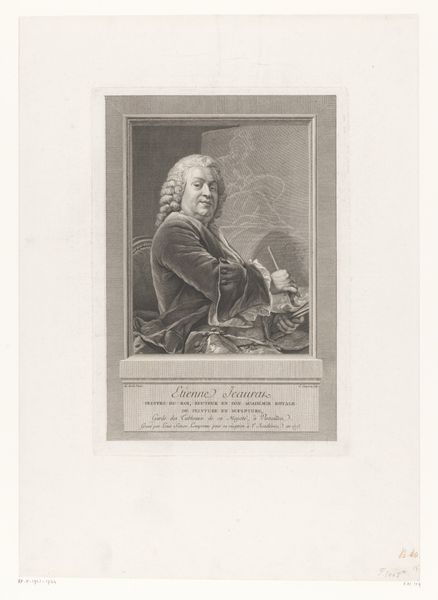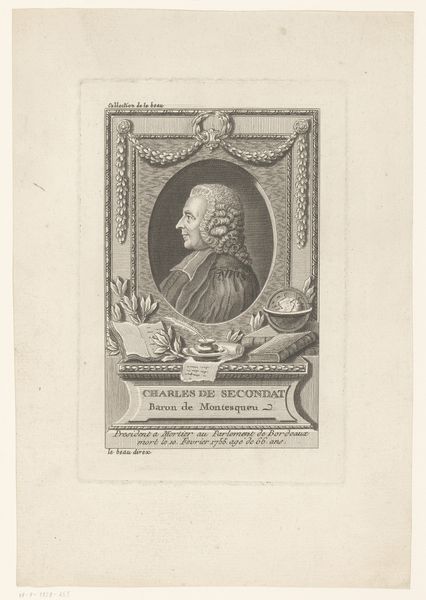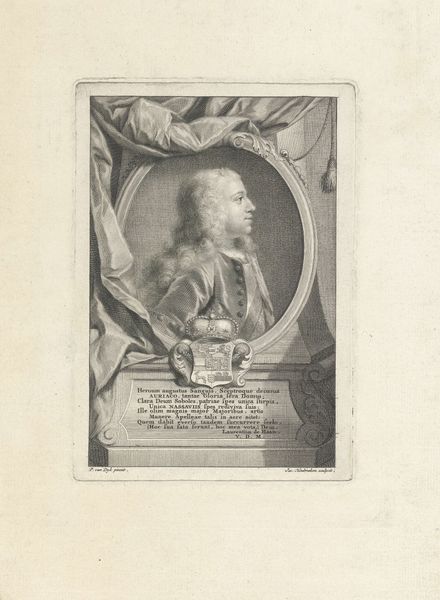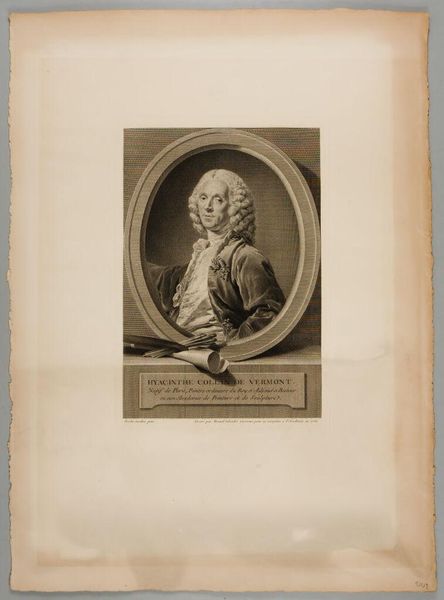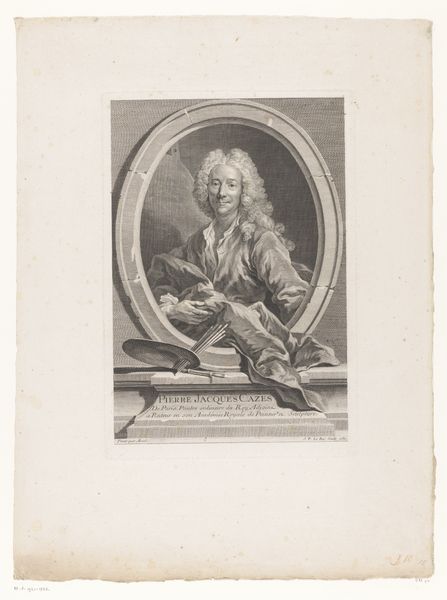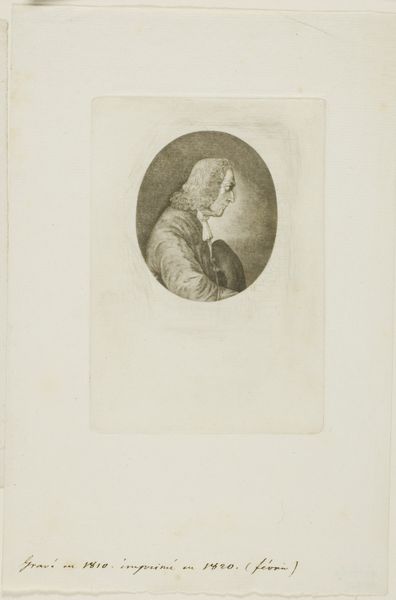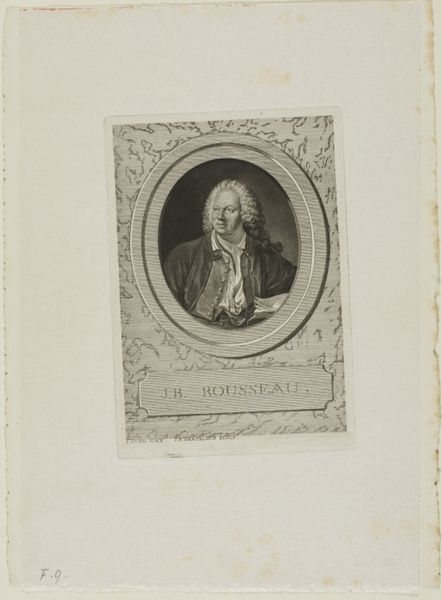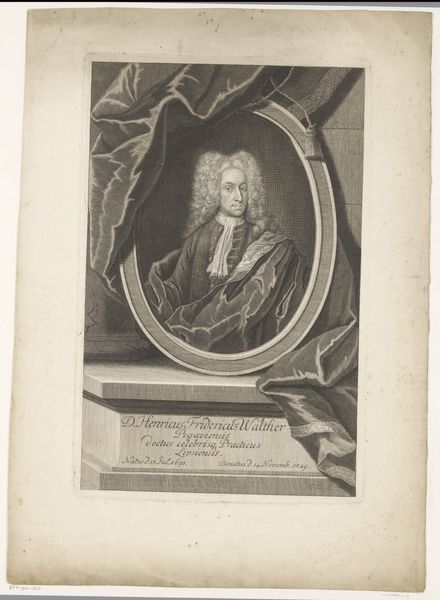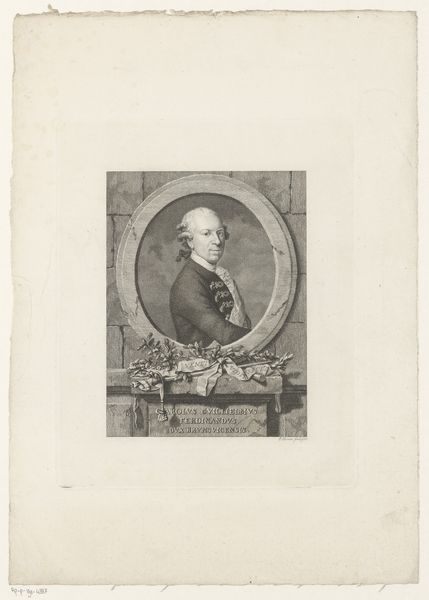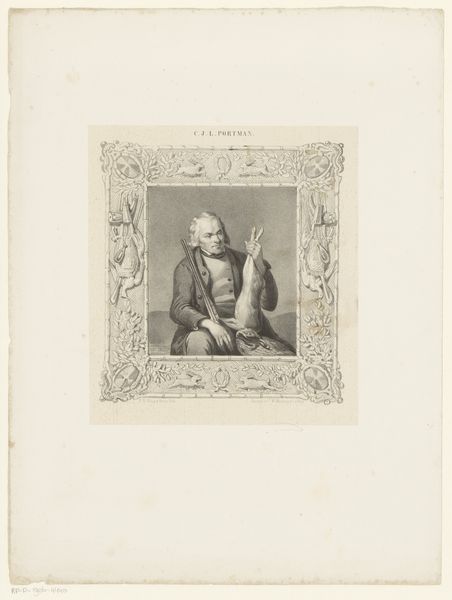
Portret van de botanicus Bernard de Jussieu, die door een loep een plant bekijkt. 18th century
0:00
0:00
Dimensions: height 301 mm, width 227 mm
Copyright: Rijks Museum: Open Domain
Curator: Editor: So, this engraving from the 18th century, "Portret van de botanicus Bernard de Jussieu, die door een loep een plant bekijkt"—it shows a botanist examining a plant through a magnifying glass. I find the image intriguing because it captures a moment of focused observation. What aspects of the work stand out to you? Curator: Immediately, I’m drawn to the materials. As an engraving, it highlights the mechanization of image production during the Enlightenment. The labor involved in creating such a detailed image through repetitive etching is considerable. Doesn't that challenge our modern notions of artistic skill? Editor: I hadn't really considered the labor aspect, focusing more on the scientific themes. The magnifying glass and the detailed plant clearly emphasize the period's fascination with empirical study and classification of the natural world. Curator: Exactly, but the *means* by which this study is made visible is key. Think about the social context: this portrait, carefully reproduced and distributed, participates in building the reputation of both the scientist and the engraver. This widespread reproduction democratizes knowledge, albeit in a manner tied to patronage and social hierarchies. How might access to this type of visual information influence contemporary views on science and nature? Editor: I see what you mean. The print becomes not just a portrait but also a vehicle for spreading knowledge and celebrating scientific methodology. It highlights the connection between artistry and science during this period. Curator: Precisely. By looking at the material production, we’ve unearthed the portrait’s function beyond simple representation, uncovering its entanglement with the Enlightenment's social fabric and its contributions to the commodification and distribution of scientific ideals. Editor: This conversation reframed my perception! I now see the piece as much more than a portrait; it’s a testament to the era’s intertwined social, scientific, and artistic practices. Curator: It's rewarding to consider the layers of materiality and meaning embedded within the art. Hopefully, that encourages us to reconsider common art historical presumptions about technique and artistry.
Comments
No comments
Be the first to comment and join the conversation on the ultimate creative platform.
